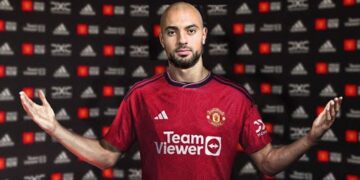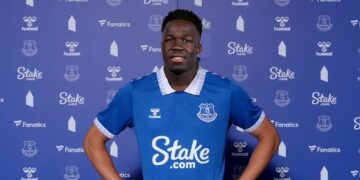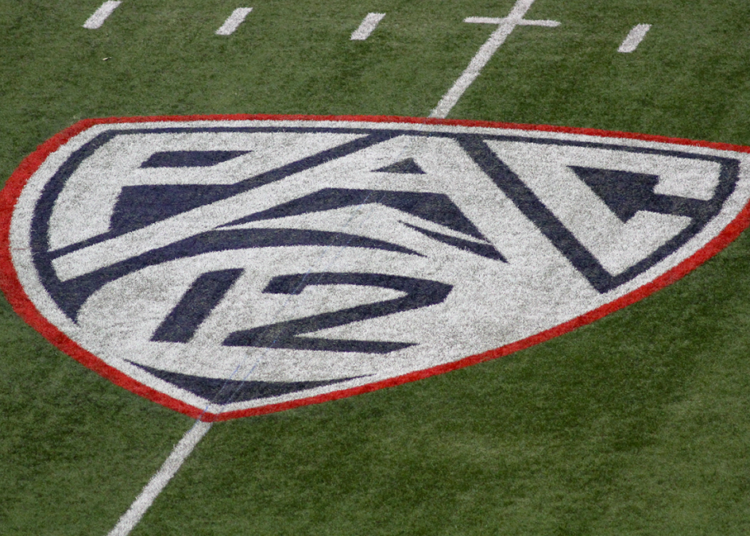As the Pac-12 continues its search for a new media rights deal, it’s become less viable the conference will land a partner willing to feature more than half its games on traditional cable or broadcast television, media consultant Jim Williams told CBS Sports.
The assertion could be a deal-breaker as Pac-12 presidents consider whether a deal heavy on streaming would be enough to keep their schools in the league. Arizona president Robert Robbins twice told CBS Sports in the last three weeks he expected over half the Pac-12 content to be on traditional linear TV platforms with networks such as CBS, Fox, ESPN and NBC considered the gold standard in live sports programming.
Williams, however, decided to go on the record with comments being repeated throughout the sports media industry: The Pac-12 may be running out of time in getting most of its content seen on a major linear carrier.
“I’m at an absolute loss how NBC, CBS, ESPN, ABC or Fox gets [the Pac-12] to 50 [percent],” said Williams, a Washington D.C.-based, seven-time Emmy Award-winning producer who helped develop five different regional sports networks throughout a career that began in 1977.
“I don’t know how anybody could sit there and assure you that, ‘We’re going to have that much on linear,'” he added. “I don’t see how they get there.”
Getting on those linear carriers is a key point in the Pac-12 maximizing its worth. It’s believed the conference would remain intact if it can get a number close to — or above — the $31.6 million Big 12 schools will earn annually beginning in 2025.
The Big 12, meanwhile, remains interested in an expansion effort that includes the the Pac-12’s “Four Corners” schools: Arizona, Arizona State, Colorado and Utah.
“What is close enough?” Williams asked. “I assume close enough is somewhere north of $25 million — in that $27 million and $28 million category.”
Short of a major linear carrier, Williams sees value in both ION and the CW networks. ION, owned by Scripps Co., is a general entertainment network that is in 37 of the top 50 markets, and was mentioned early in the process by Action Network as having conversations with the Pac-12.
The CW is majority owned by Nexstar Media Group. The group of stations reportedly reaches 100% of U.S. television markets, providing 14 hours of primetime programming per week. Its most notable sports property currently is LIV Golf.
“They could get there with ION or get there with CW,” Williams said of the Pac-12. “Personally, if I were talking to one of these presidents, I would have zero problem with CW. They’ve got legacy television stations all over the country.”
The list includes superstations WPIX in New York and KTLA in Los Angeles.
“I’ve said it five or six times,” Williams added. “If they want to prove me wrong, I’m happy. I’ve been proved wrong before. I’ll be proved wrong in the future. … Both of those two are legit broadcasters.”
Also at issue is exactly how many of the approximately 60-70 Pac-12 games available for bidding would be streaming. (That number would increase if the 10-team league expands.) Live college sports haven’t “hit” yet as an investment on streaming platforms, however. In general, athletic directors and coaches would be against a large streaming component as lack of visibility likely results in a negative impact on recruiting and branding.
That begs another question: Would having a large amount of content on ESPN+’s streaming platform be more acceptable to the Pac-12 than having games on Apple or Amazon? This is, of course, assuming ESPN is still involved in talks. To put the Pac-12 predicament in perspective: The Big 12 will have a minimum of 70% of its games on linear platforms in its new media rights deal.
It had been widely speculated that ESPN will take a piece of the Pac-12 along with a streaming provider. However, the New York Post reported last month that ESPN once had a deal on the table for the Pac-12 equal to that Big 12 number ($31.6 million), an offer that has since been revoked, according to the Post.
“I think where we are right now is Apple would take [a piece] and maybe play with Amazon to give them [Pac-12] a Friday night game,” Williams said. “The trickier part is who, then, becomes the linear part?”
He later added: “How are you going to tell Apple ‘yes,’ how do you tell Amazon ‘yes,’ if you’ve got ADs and presidents who are saying, ‘No, no we can’t do this?'”
Williams began consulting in 2000, mostly with the SEC, NFL, NBA and colleges. Before that, he was lead director of Big Ten games regionally in the mid-1980s and worked more than 400 live sports events. His Emmys include one each for Big Ten football and basketball plus two for MLB.
Last month, Robbins told CBS Sports in the same interview that the conference was 95% united but also that his school could “drive to Lubbock” if it were in the Big 12. Robbins denied he was sending a message to Pac-12 commissioner George Kliavkoff that Arizona had options with that comment.
“It wasn’t because I was emboldened because we have options,” Robbins said. “There is no deal or no agreement where, if everything blows up, we’ve got someplace to go.”
CBS Sports reported last week that no Pac-12 deal is imminent less than 15 months before its current media rights deal expires. Sources indicate it could be months before such a deal is consummated.
Moving forward, the issue becomes whether schools pursued by the Big 12 get antsy enough to take more of what might look like more of a sure thing in that conference.
Meanwhile, San Diego State, SMU and UNLV have been mentioned in some combination as expansion candidates for the Pac-12, though any conference expansion would almost certainly have to come after a new media rights deal.
The Big 12 is also believed to have interest in San Diego State, whose stock has risen quickly on the heels of the basketball program advancing all the way to the 2023 NCAA Tournament championship game.
Read the full article here


























